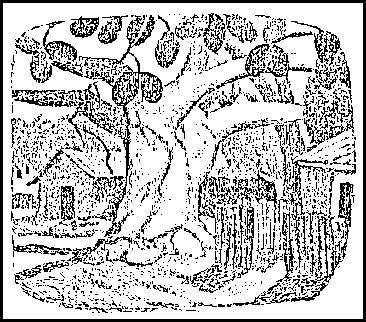Mexico
(1925)

In the mid-twenties, there were no American tourists in Guanajuato. The few Americans there were certainly not tourists. "Tourism" was not a part of the economy. Some of the American men in Guanajuato had become the husbands of Mexican women, whose beauty in that place seemed to me to be inevitable. It would have been odd not to find beautiful women in an enchanted city. Some of the Indian women were the essence of grace as they moved silently through those magic streets, and often we would see a lady of Spanish descent and culture whose appearance was breathtaking.
The dominating effect of beauty in Guanajuato, however, came from its streets, with their surprising spaces, and from the many colonial buildings that bordered them. To walk through those streets on a bright, sunny day was like hearing Chopln's music with your eyes. More than that, it was like being in among the musical notes of Chopin, stepping in and out between all the notes and musical patterns. I was thinking of this one morning when suddenly there appeared in front of me, framed in a half door, a man whose visual effect was as incongruous in that setting as the croaking of a bullfrog would be in the midst of a Chopin waltz.
This man's name was Luke Short, and if he had not "gone native" it must have been for the same reason that an ostrich could never hope to go native in a community of canaries. His wife was Mexican, and she had children by a former marriage who were Mexican. His Mexican family had taken him to its heart. When they would all go in a group to the skating rink to sit and watch the young people skate on roller skates, it was evident that Luke Short was a bona fide member of the family, but he still looked like an ostrich sitting among a flock of canaries. It might have been this visual incongruity that caused him to have certain strange dreams, which he often described to me as we sat in the plaza. The one about the mummies impressed me most of all.
In a dimly lighted underground room at the Guanajuato Panteón --- the local cemetery --- a large group of frightening mummies was on view. I did not know why those mummies were there, but I had heard of them, and Lowelito and I went to see them. Luke Short had told us about them, because of the odd dreams he said he kept having. How many times Luke Short had seen the mummies he did not say, but to appreciate his dream one should have seen them at least once. They stood in long rows on low shelves in a narrow underground corridor, so that as you walked between them they appeared to be staring down at you. Some of them still had fragments of clothing hanging here and there about their dried bodies, and the general effect was so macabre that I could not understand why anyone would ever want to make a second trip to see them.
In Luke Short's dream, he had been given the assignment of feeding milk to those mummies from a baby's bottle with a rubber nipple on it. He said that in his dream he had had to feed each and every one of them by force. They would throw their heads back and resist all the way down the line.
Perhaps it would become tiresome to tell about all the people we met in Guanajuato, for their number seems endless even though we made an effort not to meet people at all. The Mexico we were interested in was limited to that which was visible. It would have been just as well for us had the inhabitants of Guanajuato been deaf and dumb, as silent as the architecture, the mountains, the sunlight, and the blue sky. It would have suited us even more if, at the same time, we could have been invisible.
The truth is that in Mexico one can learn all one is capable of digesting merely through observation and without the aid of verbal comment of any sort. But despite our lack of interest in personalities, there was no escaping them. They revealed themselves to us in the same irresistible way that dreams steal into the mind during sleep.
Everett Gee Jackson
©1985, Texas A & M Press